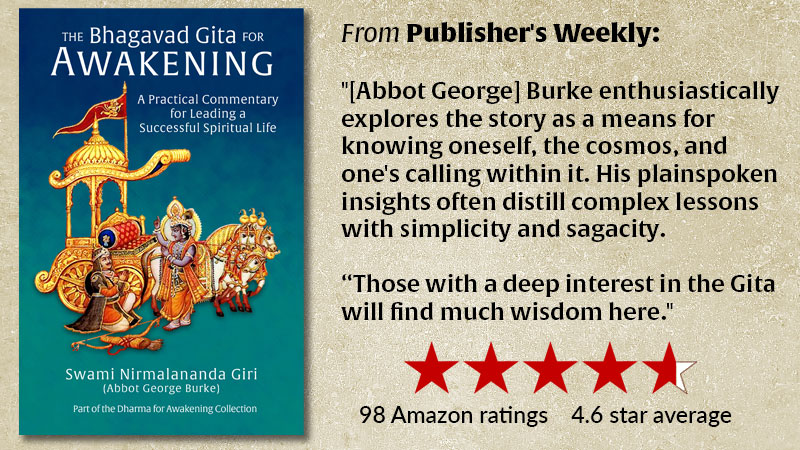
The immutable self
This statement of Krishna’s in the Bhagavad Gita is to be looked into beyond the surface appearance:
“Weapons do not pierce this [embodied Self], fire does not burn this, water does not wet this, nor does the wind cause it to wither [be dried]” (Bhagavad Gita 2:23).
First of all, the four factors: weapons, fire, wind, and water, represent the four gross elements (ether being the fifth, subtle element), earth, fire, air and water. By the “elements” we do not mean simple earth, water, fire, etc., but the four types of creative energies that combine to make up all that is material. The names given to the elements are merely symbolic of their behavior and effects.
We are encased in five bodies: annamaya, pranamaya, manomaya, jnanamaya, and anandamaya koshas–coverings. These are the “bodies” corresponding to the material, biomagnetic, mental, intellectual and will levels of our makeup. These, in turn, correspond to the elements of earth, water, fire, air, and ether.
The idea is that no matter what our consciousness is encased in or what kind of external force is “working” on us, our true self, our true nature, cannot be altered in any manner whatsoever.
No change possible
Secondly: pierced, burned, wetted, and withered (dried) are symbols of being changed, taken from or added to (increased or decreased). Since we cannot be altered in any way, anything that can be is not ourself. This is the very important teaching known in Sanskrit as anatma–the teaching regarding what is not the self.
Buddha emphasized this greatly, and was being completely traditional in doing so. Sadly, those outside India who encountered his teachings thought that the term (anatta in Pali) meant there is no self. But the term means not-self, not no-self, which would be niratma or niratta.
So wherever we see change…that is not the self. “Change and decay all around I see. O Thou Who changest not, abide with me.” Unfortunately, these words are addressed God, Who is not the problem. What should be sought is the abiding experience of our own unalterable self. For Krishna sums it up in this way: “This cannot be pierced, burned, wetted or withered; this is eternal, all-pervading, fixed; this is unmoving and primeval” (2:24).
The self is the inmost reality and can only be known at the core of our being–which is the self. Yet it pervades all that we call “us,” enlivening all our body-levels in the same way the proximity of fire creates warmth in inert substances and the light of the sun stimulates the growth of living things. This is a basic concept of Sankhya philosophy. Primordial energy has no motive power of its own, but the proximity of Spirit causes it to “live” and move. It is with us as it is with God.
The presence of God causes the primal matter to manifest as all creation; and it is the presence of our spirit that causes our own private prakriti to manifest as a chain of ever-evolving births and deaths. Self-knowledge is the apex of our evolution, after which our prakriti becomes a mirror, silent and motionless, no longer moving, but reflecting only consciousness itself.
Reading for Awakening–Grow Your Spiritual Library:
The Bhagavad Gita for Awakening: A Practical Commentary for Leading a Successful Spiritual Life, available in hardcover, paperback, and ebook from Amazon and other online bookstores.








